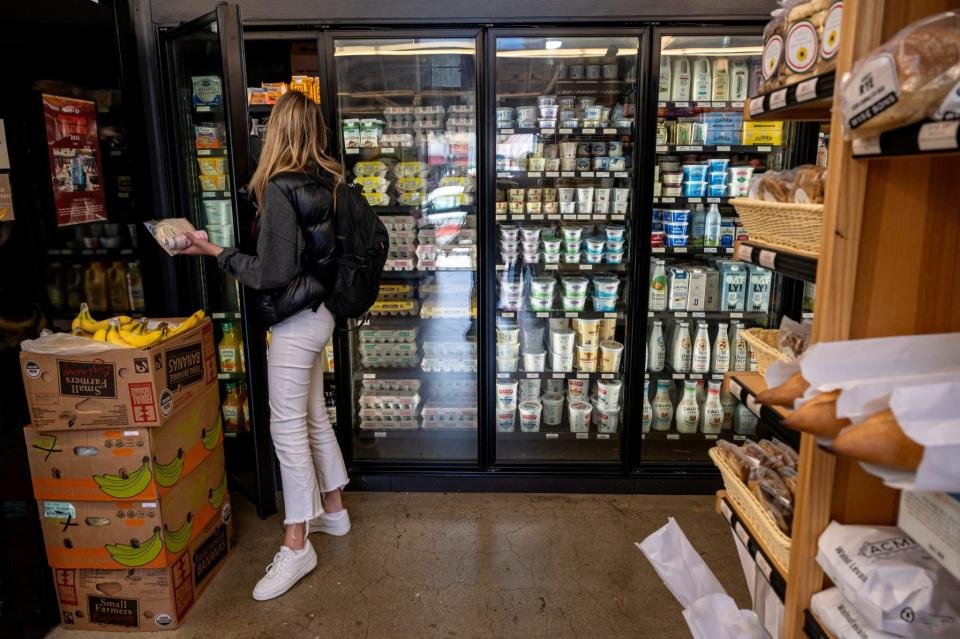Viral photo of $444 Trader Joe’s receipt sparks new debate over grocery inflation

Whatever the official figures have to say about inflation rates, many U.S. families are likely to rely on another source to decide which way prices are going: the grocery store. The latest reminder of this comes after a photo of a $444 receipt from Trader Joe's for a single family's groceries, which has reignited the conversation about how unaffordable grocery shopping has become for many families in the U.S.
Of course, everyone differs on the "right" way to buy groceries, and the shopper behind the viral receipt was quickly taken to task for some of the purchases (and for shopping at Trader Joe's at all, which isn't necessarily a haven of affordability for a weekly grocery haul). But the photo still hit on a major pain point for many Americans, highlighting the sky-high cost of groceries.
According to a recent White House report, grocery inflation has cooled significantly in recent months. And between some prices falling and overall wages being higher than prior to the pandemic, the White House is making the case that grocery purchasing power has actually increased. Strictly going off of the government's data, that is true: At-home food prices have increased by 1% over the past year, according to the Consumer Price Index, while wages grew by about 3.9%.
But these more tepid price increases are following years of significant, compounding inflation—since 2021, groceries are about 25% more expensive. And given that households are often food shopping at least weekly, the price hikes they frequently see at the market make a big impression.
"The reason consumers feel like prices are increasing is because they still are," says Kendall Meade, a certified financial planner at SoFi. "While inflation may be slowing down, it has not stopped and we are not seeing disinflation."
In fact, more than 80% of consumers say that food prices have increased a little or a lot over the last 12 months, according to the May 2024 Consumer Food Insights Report from Purdue University. The same report finds 37% of Gen Zers and millennials say they are dipping into their savings or going into debt to pay for food (other research has found the same trend). Additionally, "food” was the top choice when consumers were asked which goods and services saw the largest year-over-year price increase (though that is not true, according to official inflation figures, as the cost of housing and childcare have increased more).
As the White House's report points out, the pain is especially acute for lower-income families, who typically spend a greater portion of their income on food, around 11%. But shoppers of all income levels are being squeezed, says Michael Della Penna, chief strategy officer of InMarket, which studies consumer buying habits. As a result, they are making changes like switching from brand names to stores' private labels or cutting back altogether.
And other economic factors, like rising interest rates and shrinkflation, also aren't helping matters.
"Increased grocery prices are just one piece of the puzzle," says Della Penna. "Consumers are feeling the burn of high costs across categories, including housing, restaurants, entertainment, and travel, putting pressure on many Americans to get the most out of every dollar spent."
Grocery prices finally dropping
The good news is that some retailers are starting to drop prices: Aldi, Amazon Fresh, Target, Walgreens, and Walmart have all recently announced they are cutting prices on hundreds to thousands of grocery and everyday items.
Budgeting experts say the best tactics to save money on groceries include sticking to a meal plan and stopping at multiple stores to get the best deals, rather than doing all the shopping in one place. Ordering online for pickup can also save on impulse purchases, says Andrea Woroch, a family-budgeting expert.
Her biggest cost-saving tip is to limit food waste as much as possible. While many budgeters recommend buying in bulk from places like Costco and Sam's Club—which is the most cost-effective strategy for a lot of families—it's important to be selective.
"While bulk packages offer the best price per unit, if you overbuy food in bulk, you run the risk of some of it going bad," says Woroch, noting that things like chips and crackers can go stale and end up in the trash. Then, "any savings gets tossed at the same time."
This story was originally featured on Fortune.com

 Yahoo Finance
Yahoo Finance 